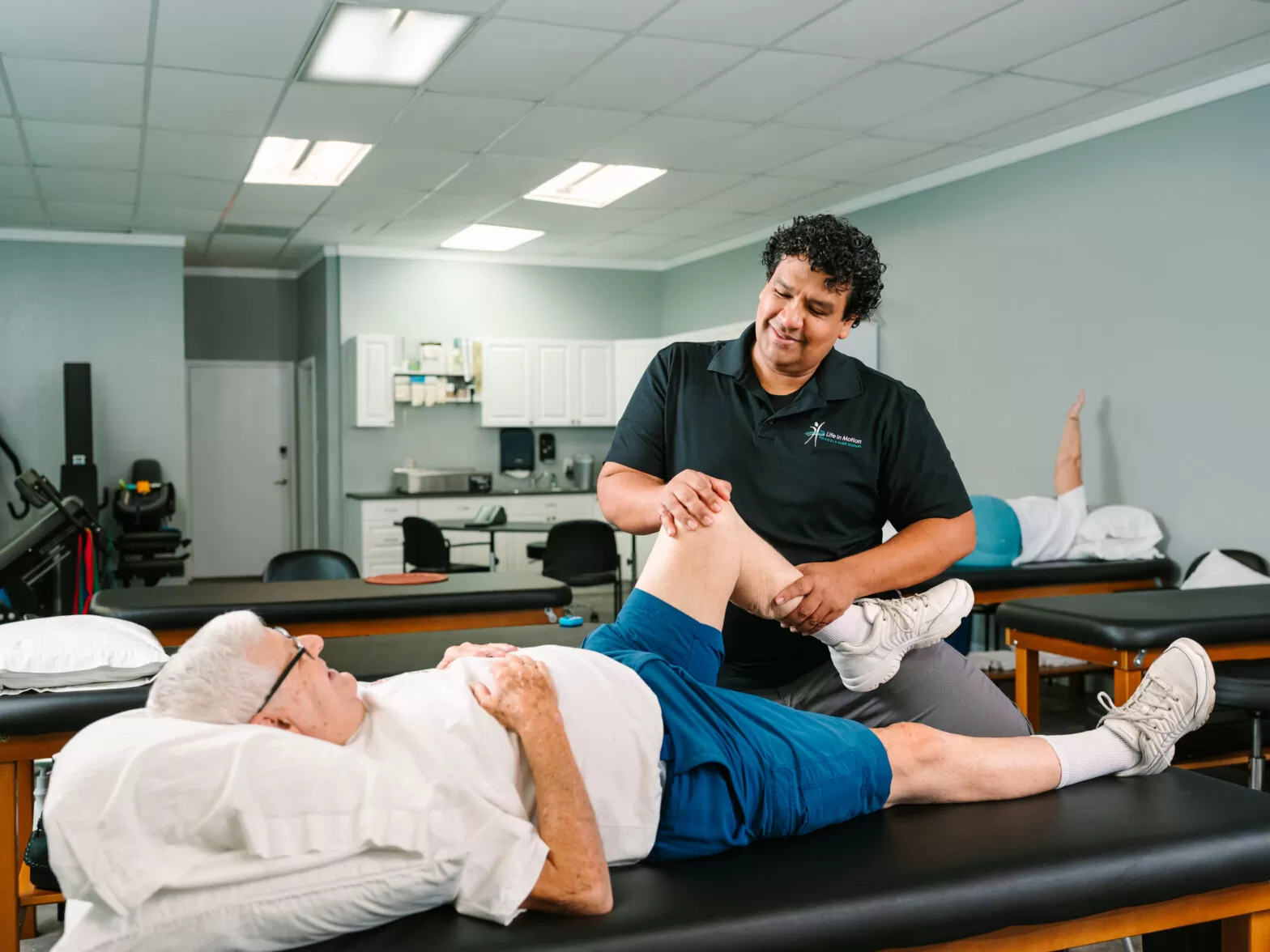Hip and Knee Pain Relief
Do you pop, crack, ache, or hurt every time you sit down, stand up, climb stairs, or pivot? Can you tell the changes in the weather by the aches in your hips and knees? You are not alone. Most of your daily activity, from getting out of bed to getting in the car, rely on the strength of your hips and knees. When these crucial joints begin to ache or show signs of wear and tear, you may find moving without pain difficult, if not impossible. Fortunately, physical therapy may provide much-needed relief from the aches and pains in your hips and knees.
A Word About Your Hips & Knees
Your knees are the largest joints in your body incorporating not two, but three bones and several tendons and ligaments that hold those bones together. Your knee is comprised of your femur, your tibia (your shin bone) and your patella (your knee cap) and relies heavily on connective tissue for its structure. When they work well, your knees make it possible to sit, stand, bend, walk, pivot, dance, and do just about every other daily activity you can think of. However, its complex nature also means your knee is prone to injury, arthritis and other painful problems. Feel free to contact our highly trained physical therapist at Life In Motion Physical & Hand Therapy.
Even though knees are the largest joint in the body, they are not the strongest. That honor belongs to your hip which is comprised of the head of your femur (your thigh bone) and the part of your pelvic bone called the acetabulum. Hips are ball and socket joints. The femoral head looks a lot like a ball that fits perfectly into the glove (or socket) formed by your pelvic bone. You use your hips for many of the same functions as your knees – sitting, standing, walking, bending, running, jumping, etc. However, while the knee is only meant to move back and forth, your hip is designed to move forward and back as well as side to side.
Common Causes of Hip and Knee Pain
Among the most common causes of hip and knee pain is osteoarthritis. This painful joint disease occurs when bony growths begin to form in the joint, damaging the connective tissue that allows the hip or knee to move. Osteoarthritis may be caused by an old injury, an autoimmune disease or simple aging. Hip and knee pain can also be caused by a condition called bursitis. Fluid-filled sacs that cushion the spaces between the bones in the knee and hip are known as bursae. When these sacs are inflamed from repetitive motion, the joint becomes very painful, especially during movement of any kind. Poor posture, overuse or even running can also cause inflammation in the iliotibial band (IT band) that runs from your hip to your knee that causes pain in both joints. Wearing the wrong shoes can cause knee and hip pain, especially when you wear the wrong shoes during exercise. Even pregnancy can cause significant hip pain as the hormone relaxin prepares the body for labor and delivery and weight on the pelvis increases.
Find Relief From Physical Therapy in Pinellas Park
Hip and knee replacement surgery is the most common joint replacement procedure in America. For many people, replacing these joints with new mechanical joints is the only way to repair damage done from years of overuse and injury. For the rest, Physical Therapy can provide significant pain relief without the risk of going under the knife.
Your Physical Therapist will begin your treatment with a full evaluation that may include testing your range of motion, level of pain and the location of the pain. They may, together with your doctor, gather more information from other diagnostic or imaging tests to rule out any underlying conditions. Once this testing process is completed, your Physical Therapist will begin to craft a customized treatment plan that is designed to address your strength, flexibility, mobility, and pain needs.
Over the course of treatment, you will participate in a variety of therapies geared to helping ease your pain while improving the strength and durability of your joints. This may include manual therapies like soft tissue mobilizations. It may include the application of ice, heat or the Class 4 light laser to relieve pain and decrease inflammation. You may perform targeted exercises to improve mobility and strength and stretches to help your range of motion.
Periodically throughout your treatment plan, your therapist will evaluate your progress including the level of pain you are experiencing and how far you can move your knees and hips in various positions. Once you have completed your treatment plan, your Physical Therapist will offer after-care instructions that will help you stay mobile and doing the activities you love.
What are you waiting for? Don’t live another day with hip and knee pain. Contact Us Today at our Pinellas Park location to find out how Physical Therapy can improve your quality of life and reduce of your hip or knee pain.
FAQs
What causes knee pain?
Your knees are hinge joints that allow for the forward-and-backward motions within the joint.
The knee is one of the largest joints in your body, made up of a complex system of bones, tendons, and ligaments. Because of this, the knee can be easily injured due to overexertion or repetitive motions. Additionally, knee pain can be caused due to an underlying ailment. Some of the most common causes of knee pain are sprains, strains, fractures, tears, dislocation, tendinitis, bursitis, and arthritis.
What can I do to relieve knee pain?
There are some actions you can take on your own to relieve your knee pain, including wearing properly fitted shoes, using hot and cold remedies, stretching, and taking breaks from physical activity when noticing painful flare-ups. However, physical therapy is the best way to find consistent, long-lasting relief for your knee pain. Through manual therapy, strength training, flexibility training, balance training, and pain-specific exercises, physical therapy can get your knees moving comfortably once again.
How do I get rid of knee pain?
Frequently consulting with a physical therapist is the best way to continually manage your knee pain. Having a regular physical therapy checkup ensures that your joints are working at their peak performance. In addition, any problems will be discovered early, preventing the onset of arthritis and joint injury. If you do have arthritis or have had surgery, then a regular physical therapy check-up is especially important, in order to make sure that your knee pain remains at bay.
How do you diagnose knee pain?
Our physical therapists will examine your knee for signs of misalignment or structural damage, in addition to examining your stance, posture, gait, and range of motion. If needed, additional tests (such as x-rays) may be conducted. This will help determine the cause of your knee pain so we can treat it accordingly. After your initial evaluation is complete, your physical therapist will prescribe a physical therapy plan specifically for you, aimed at relieving unnatural stresses and strains, and normalizing your joint function.



